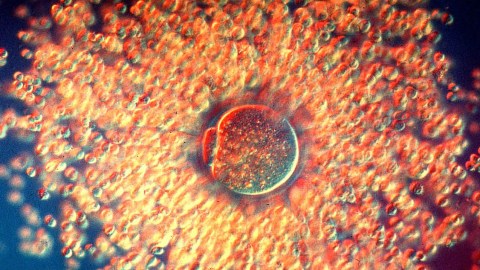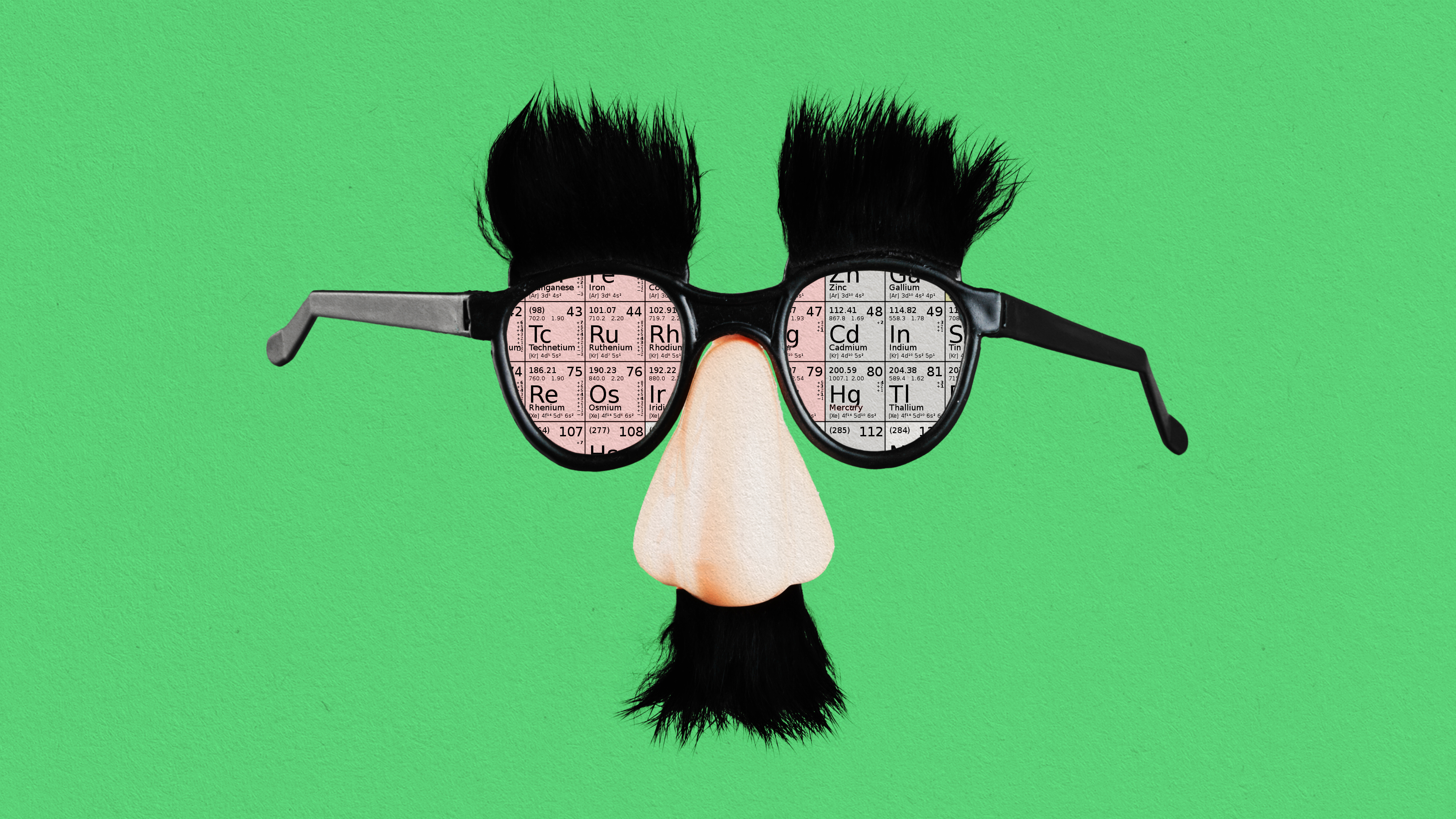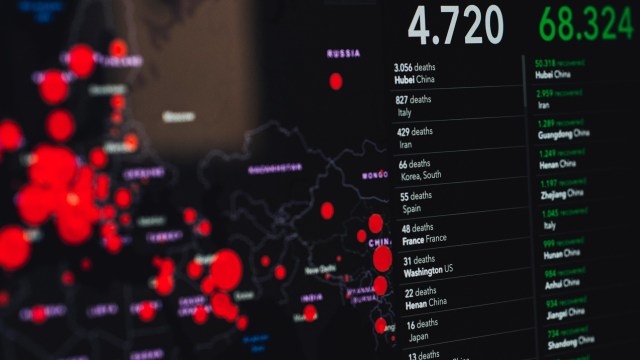The growth of an organism rides on a pattern of waves

Getty Images / Handout
When an egg cell of almost any sexually reproducing species is fertilized, it sets off a series of waves that ripple across the egg’s surface.
These waves are produced by billions of activated proteins that surge through the egg’s membrane like streams of tiny burrowing sentinels, signaling the egg to start dividing, folding, and dividing again, to form the first cellular seeds of an organism.
Now MIT scientists have taken a detailed look at the pattern of these waves, produced on the surface of starfish eggs. These eggs are large and therefore easy to observe, and scientists consider starfish eggs to be representative of the eggs of many other animal species.
In each egg, the team introduced a protein to mimic the onset of fertilization, and recorded the pattern of waves that rippled across their surfaces in response. They observed that each wave emerged in a spiral pattern, and that multiple spirals whirled across an egg’s surface at a time. Some spirals spontaneously appeared and swirled away in opposite directions, while others collided head-on and immediately disappeared.
The behavior of these swirling waves, the researchers realized, is similar to the waves generated in other, seemingly unrelated systems, such as the vortices in quantum fluids, the circulations in the atmosphere and oceans, and the electrical signals that propagate through the heart and brain.
“Not much was known about the dynamics of these surface waves in eggs, and after we started analyzing and modeling these waves, we found these same patterns show up in all these other systems,” says physicist Nikta Fakhri, the Thomas D. and Virginia W. Cabot Assistant Professor at MIT. “It’s a manifestation of this very universal wave pattern.”
“It opens a completely new perspective,” adds Jörn Dunkel, associate professor of mathematics at MIT. “You can borrow a lot of techniques people have developed to study similar patterns in other systems, to learn something about biology.”
Fakhri and Dunkel have published their results today in the journal Nature Physics. Their co-authors are Tzer Han Tan, Jinghui Liu, Pearson Miller, and Melis Tekant of MIT.
Finding one’s center
Previous studies have shown that the fertilization of an egg immediately activates Rho-GTP, a protein within the egg which normally floats around in the cell’s cytoplasm in an inactive state. Once activated, billions of the protein rise up out of the cytoplasm’s morass to attach to the egg’s membrane, snaking along the wall in waves.
“Imagine if you have a very dirty aquarium, and once a fish swims close to the glass, you can see it,” Dunkel explains. “In a similar way, the proteins are somewhere inside the cell, and when they become activated, they attach to the membrane, and you start to see them move.”
Fakhri says the waves of proteins moving across the egg’s membrane serve, in part, to organize cell division around the cell’s core.
“The egg is a huge cell, and these proteins have to work together to find its center, so that the cell knows where to divide and fold, many times over, to form an organism,” Fakhri says. “Without these proteins making waves, there would be no cell division.”

MIT researchers observe ripples across a newly fertilized egg that are similar to other systems, from ocean and atmospheric circulations to quantum fluids. Courtesy of the researchers.
In their study, the team focused on the active form of Rho-GTP and the pattern of waves produced on an egg’s surface when they altered the protein’s concentration.
For their experiments, they obtained about 10 eggs from the ovaries of starfish through a minimally invasive surgical procedure. They introduced a hormone to stimulate maturation, and also injected fluorescent markers to attach to any active forms of Rho-GTP that rose up in response. They then observed each egg through a confocal microscope and watched as billions of the proteins activated and rippled across the egg’s surface in response to varying concentrations of the artificial hormonal protein.
“In this way, we created a kaleidoscope of different patterns and looked at their resulting dynamics,” Fakhri says.
Hurricane track
The researchers first assembled black-and-white videos of each egg, showing the bright waves that traveled over its surface. The brighter a region in a wave, the higher the concentration of Rho-GTP in that particular region. For each video, they compared the brightness, or concentration of protein from pixel to pixel, and used these comparisons to generate an animation of the same wave patterns.
From their videos, the team observed that waves seemed to oscillate outward as tiny, hurricane-like spirals. The researchers traced the origin of each wave to the core of each spiral, which they refer to as a “topological defect.” Out of curiosity, they tracked the movement of these defects themselves. They did some statistical analysis to determine how fast certain defects moved across an egg’s surface, and how often, and in what configurations the spirals popped up, collided, and disappeared.
In a surprising twist, they found that their statistical results, and the behavior of waves in an egg’s surface, were the same as the behavior of waves in other larger and seemingly unrelated systems.
“When you look at the statistics of these defects, it’s essentially the same as vortices in a fluid, or waves in the brain, or systems on a larger scale,” Dunkel says. “It’s the same universal phenomenon, just scaled down to the level of a cell.”
The researchers are particularly interested in the waves’ similarity to ideas in quantum computing. Just as the pattern of waves in an egg convey specific signals, in this case of cell division, quantum computing is a field that aims to manipulate atoms in a fluid, in precise patterns, in order to translate information and perform calculations.
“Perhaps now we can borrow ideas from quantum fluids, to build minicomputers from biological cells,” Fakhri says. “We expect some differences, but we will try to explore [biological signaling waves] further as a tool for computation.”
This research was supported, in part, by the James S. McDonnell Foundation, the Alfred P. Sloan Foundation, and the National Science Foundation.
Reprinted with permission of MIT News. Read the original article.





